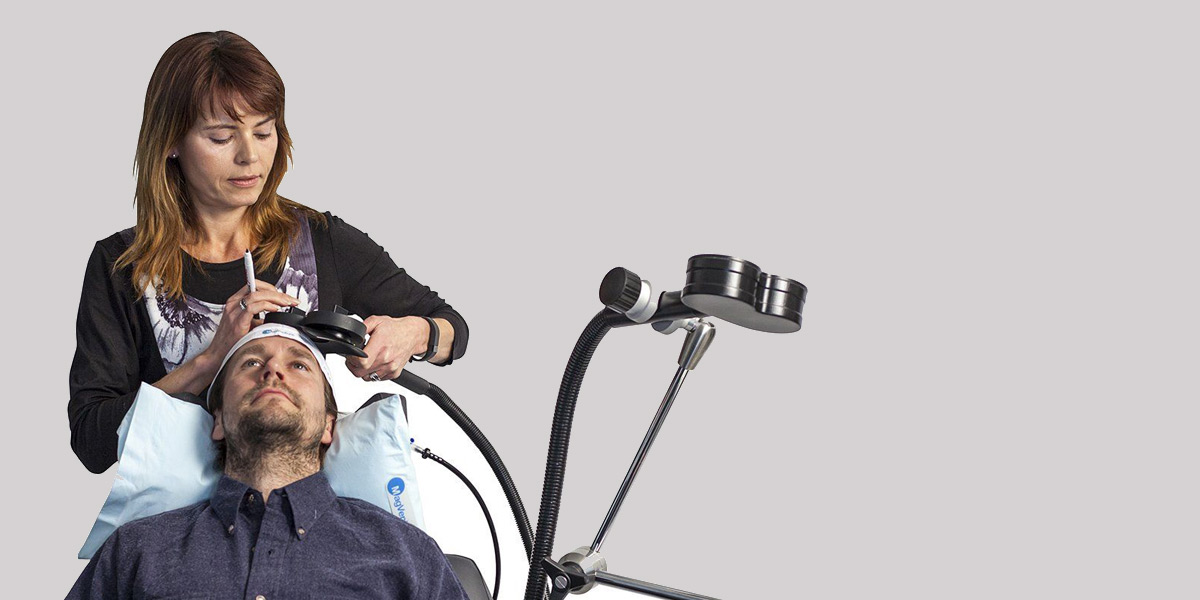
Use of psychiatric drugs during pregnancy and breastfeeding
28 August 2023Dear Readers,
Today, I want to share with you a promising alternative in the treatment of depression, obsessive-compulsive disorder (OCD) and addiction: TMS therapy. In our practice, we aim to make a significant difference in the lives of our patients by providing access to this innovative form of treatment.
But what is TMS?
Transcranial Magnetic Stimulation (TMS) is a non-invasive therapy that uses magnetic pulses to stimulate nerve cells in the brain. This treatment has been shown to be effective in reducing symptoms associated with mental health disorders, including addiction. A particularly attractive aspect of TMS therapy is that it does not require surgery, anaesthesia or sedation.
How does TMS work?
A small electromagnetic coil is placed on the patient’s head above the targeted area of the brain called the prefrontal cortex. This area is essential in mood regulation. TMS magnetic fields are focused precisely on this area, releasing very small electrical currents that activate brain cells, releasing neurotransmitters. The procedure takes about an hour and is generally performed five sessions a week for four to six weeks.
What are the benefits of TMS?
TMS therapy has received Food and Drug Administration (FDA) approval as an effective treatment for depression since 2008. In addition, about one in three patients treated with TMS have experienced complete symptom relief in just six weeks. This therapy can also be a valuable support for patients with OCD and addictions, providing an alternative for those who have not had success with conventional treatments. Another important advantage of TMS is that it does not affect cognitive function, allowing patients to resume their daily activities immediately after treatment. Side effects are mild and temporary, and the risk of seizures is extremely low. In addition to TMS treatment, a combined approach can enhance therapeutic results. TMS therapy combined with counselling or psychotherapy can help patients better cope with negative thoughts and destructive behaviours by learning constructive habits and behaviours. However, it is important to note that TMS is not suitable for everyone, and patients with non-demonstrable magnetic field-sensitive metals or metal devices implanted near the stimulation coil are not suitable candidates for this therapy.
In which conditions is TMS indicated?
TMS is used in both psychiatric and neurorehabilitation conditions, and there are a number of approved and potential protocols for different conditions.
These include:
- Approved TMS protocols: – Depression – Anxiety – Obsessive Compulsive Disorder – Addiction
- Off-label TMS protocols with already published clinical trials: – Neuropathic pain – Tension headaches/Migraine – Motor recovery following stroke
- Off-label TMS protocols without published papers but used in clinical practice: – Autism spectrum disorders (to be published soon) – Cognitive recovery – Aphasia recovery – Parkinson’s disease – Essential tremor – Dystonia
- Off-label peripheral stimulation protocols (+/- associated with TMS): – Facial paralysis – Trigeminal neuralgia and other facial pain disorders – Peripheral neuropathy – Respiratory recovery – Back pain – General neurorehabilitation – Stroke, multiple sclerosis, traumatic brain injury, spinal cord injury.
TMS therapy is an innovative and safe way to treat depression, OCD and addiction.
We encourage all those struggling with these disorders to seek help and explore the therapeutic options available. Learn more about TMS and how you can benefit from this therapy in our specialist practice.
Let’s work together to find effective and tailored solutions for each individual, bringing light and hope to the fight against mental illness!


